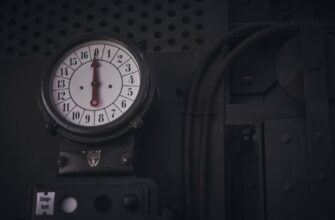Maintaining a store ledger in cold storage is critical for ensuring inventory accuracy, compliance with regulations, and minimizing losses. Cold storage environments, such as refrigerated warehouses or freezer units, require meticulous record-keeping due to the unique challenges of temperature-sensitive inventory. A well-structured store ledger system helps businesses track stock levels, monitor expiration dates, and maintain operational efficiency. This article outlines best practices for managing a store ledger in cold storage, including key strategies, tools, and frequently asked questions.
### Best Practices for Managing a Store Ledger in Cold Storage
1. **Maintain Accurate and Up-to-Date Records**
A store ledger in cold storage must reflect real-time inventory status. This includes tracking the quantity, expiration dates, and location of each item. Regular updates are essential to prevent discrepancies, especially in environments where temperature fluctuations can affect product integrity. For example, perishable goods like dairy or frozen foods require frequent checks to ensure they remain within safe storage conditions.
2. **Use Digital Systems for Efficiency**
Manual record-keeping is prone to errors and inefficiencies. Implementing a digital ledger system, such as a cloud-based inventory management platform, allows for real-time data access and automated alerts. These systems can track temperature sensors, monitor storage conditions, and generate reports on inventory turnover. For instance, a cold storage facility might use a system that logs temperature deviations and sends notifications to staff if a unit exceeds the allowable range.
3. **Conduct Regular Audits and Inventory Checks**
Audits are crucial for verifying the accuracy of the store ledger. These checks should be performed at least monthly, with more frequent inspections for high-priority items. During audits, staff should verify that inventory records match physical stock, ensuring no items are missing or miscounted. For example, a pharmaceutical company might conduct quarterly audits to ensure all temperature-sensitive medications are stored correctly and accounted for.
4. **Comply with Regulatory Standards**
Cold storage operations must adhere to industry-specific regulations, such as those set by the FDA or USDA. A store ledger must include documentation that proves compliance, including temperature logs, batch numbers, and expiration dates. For example, a food distributor might need to maintain a ledger that tracks the origin of each product, its storage conditions, and its shelf life to meet food safety regulations.
5. **Train Staff on Ledger Management**
Employees must be trained on how to use the store ledger system and understand its importance. This includes knowing how to input data, track inventory changes, and report discrepancies. Regular training sessions can help prevent human errors, such as mislabeling items or failing to update records. For instance, a cold storage facility might hold weekly training on new software features to ensure staff remain proficient.
### The Importance of a Store Ledger in Cold Storage
A store ledger in cold storage serves multiple purposes. First, it ensures that inventory is tracked accurately, reducing the risk of stockouts or overstocking. Second, it supports compliance with legal and regulatory requirements, which is critical in industries like food, pharmaceuticals, and healthcare. Third, it helps prevent losses due to spoilage or theft by providing a clear record of inventory movements. For example, a cold storage facility might use a ledger to track the movement of perishable goods, ensuring they are rotated properly to minimize waste.
### FAQ: Common Questions About Store Ledger in Cold Storage
**Q: What is a store ledger in cold storage?**
A: A store ledger in cold storage is a record-keeping system that tracks inventory, including quantities, expiration dates, and storage conditions. It ensures that all items are accounted for and that storage practices meet regulatory standards.
**Q: How do I choose the right store ledger system for cold storage?**
A: Look for a system that integrates with temperature monitoring devices, allows for real-time updates, and provides audit trails. Choose a solution that is scalable and user-friendly, with features like automated alerts for temperature deviations.
**Q: How often should I audit my cold storage ledger?**
A: Audits should be conducted at least monthly, with more frequent checks for high-value or perishable items. Regular audits help identify discrepancies and ensure compliance with storage regulations.
**Q: What should I do if there’s an error in the cold storage ledger?**
A: If an error is discovered, it should be documented immediately and corrected. The ledger should be updated to reflect the change, and the cause of the error should be investigated to prevent recurrence. For example, if a product is missing from the ledger, staff should check inventory and update records accordingly.
**Q: How can I ensure data security in my cold storage ledger?**
A: Use encryption for digital systems, limit access to authorized personnel, and implement backup protocols. Regularly review access logs to detect unauthorized changes or potential breaches.
By following these best practices, businesses can maintain a reliable store ledger in cold storage, ensuring operational efficiency, compliance, and the integrity of temperature-sensitive inventory.








